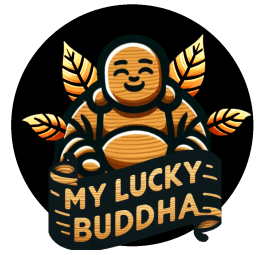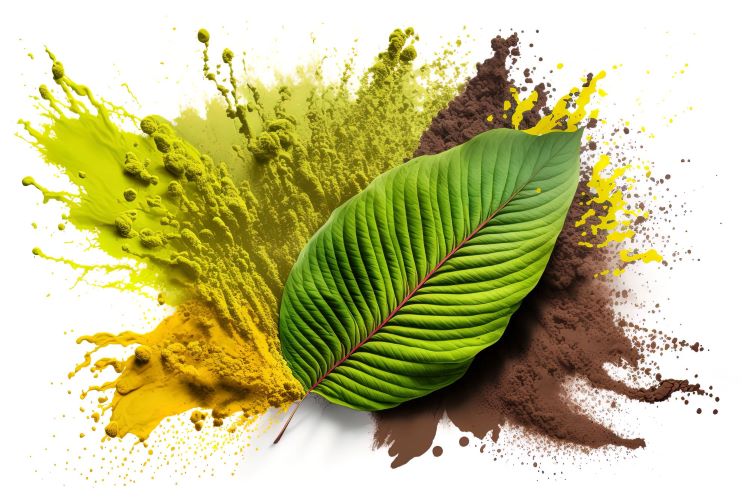Kratom Colors Explained
Kratom lovers often encounter the terms “Red,” “Green,” and “White” when choosing strains. Many ask, “What do kratom colors mean?” These colors not only distinguish strains but also hint at their effects.
What are Kratom’s Color?
Seasonal Shifts in Drying
A major factor influencing kratom powder color is the drying season. Kratom trees, primarily harvested in Southeast Asia, experiences distinct wet and dry seasons. These conditions directly impact the drying process and the final color.
- Wet Season: During the wet season, higher humidity causes leaves to retain more moisture. When dried, they often turn darker, sometimes even brownish. This extended drying time allows for more chlorophyll breakdown, resulting in deeper hues.
- Dry Season: Conversely, during the dry season, leaves lose moisture faster due to lower humidity. This quicker drying can create a lighter, reddish-brown powder. Rapid drying preserves more of the original leaf color, often aligning with the expected red veins like Red Bali, Red Borneo and Red Malay.
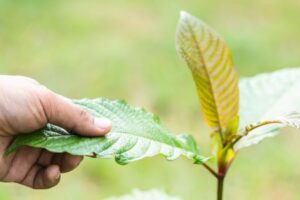
The Impact of Drying Methods
The drying technique also significantly influences the final color. Farmers employ various methods, each contributing to the powder’s unique hue.
- Sunlight Drying: Leaves dried under direct sunlight tend to become lighter. UV rays break down pigments, producing a reddish or greenish tint depending on the strain.
- Shade Drying: Leaves dried in shade or indoors retain a darker color. The absence of direct sunlight slows down pigment breakdown, resulting in a deeper, sometimes brownish color.
- Fermentation: Certain red strains undergo fermentation during drying. This process darkens leaves, yielding a richer, darker powder. Fermentation is often used to enhance specific alkaloid profiles, potentially influencing the strain’s effects.
Kratom Colors and Uses: Understanding Kratom Color Effects
- Red Vein Kratom: Known for its calming properties, Red Vein is ideal for those seeking relaxation. It’s perfect for unwinding after a long day.
- Green Vein Kratom: Offers a balanced mix of energy and calm, making it great for daytime use. It helps maintain focus without overstimulation.
- White Vein Kratom: Provides an energizing and uplifting effect, making it perfect for boosting motivation, energy, and focus. It’s the ideal pick-me-up.
- Yellow & Gold Kratom: These strains combine relaxing and stimulating properties, offering a moderate experience. They’re perfect for users wanting balanced kratom color effects without intensity.
By understanding these kratom colors and uses, you can choose the strain that aligns best with your needs and preferences.
The Role of Fermentation in Kratom Color
Fermentation plays a significant role in shaping the color of certain red vein kratom strains. Red kratom, especially varieties like Red Elephant or Red Bali, sometimes undergoes a fermentation process that gives the powder a darker appearance. This process often occurs after the kratom leaves are harvested and exposed to the elements or undergo controlled drying techniques.
During fermentation, the alkaloid profiles shift slightly, often increasing the levels of 7-hydroxymitragynine, which enhances the strain’s calming effects. This can result in a darker, browner kratom powder and more potent sedative effects compared to non-fermented kratom. Many users report that fermented red kratom, often known as Bentuangie, provides a smoother experience with more profound relaxation benefits.
Fermentation not only alters the color but can also make red vein kratom feel more mellow, especially when compared to non-fermented varieties. Users seeking enhanced relaxation often prefer these darker, fermented strains.
The Red Vein Kratom That Isn’t Always The Color Red
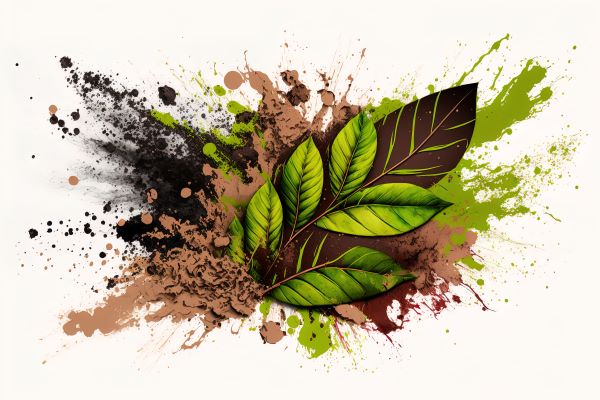
Unveiling the Color Misconception
It’s a common misunderstanding that all red kratom should be uniformly red. In reality, the color can range from reddish-brown to deep brown, influenced by the factors discussed earlier. This misconception stems from the belief that consistent color equals quality, which isn’t always true for kratom.
- Natural Variation: Like wine, kratom powder color varies based on origin and production methods. This natural diversity reflects the plant’s adaptability and the diverse techniques used by farmers.
- Market Demands: The market sometimes drives expectations for uniform color, leading some vendors to standardize products through blending or processing. However, these practices might not showcase kratom’s true, unadulterated nature.
Decoding Kratom’s Color’s Message
Kratom powder color can offer clues about its processing, but not necessarily its effects. While some associate certain colors with specific effects, these aren’t strict rules. Alkaloid content, which determines effects, is influenced by drying but isn’t solely defined by color.
- Alkaloid Content: Drying impacts alkaloid levels, but visual color doesn’t directly correlate with potency or quality. A darker or lighter hue doesn’t indicate a stronger or weaker product.
- Effect Expectations: Users often choose strains based on color (e.g., red for relaxation). However, actual effects depend on the specific alkaloid profile, influenced by more than just color.
The four Primary alkaloids in Kratom
Kratom contains several alkaloids, with four key ones playing a significant role in its effects: mitragynine, 7-hydroxymitragynine, speciogynine, and paynantheine. These chemical compounds contribute to the unique properties that make kratom so popular.
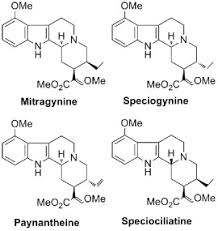
- Mitragynine: This is the most abundant alkaloid in kratom, often making up about 60-70% of the total alkaloid content. Mitragynine is known for its stimulating and energizing effects, providing a boost in alertness and focus. It’s the primary reason kratom is sought after for enhancing daily productivity.
- 7-Hydroxymitragynine: Although present in much smaller amounts, 7-hydroxymitragynine is one of the most potent alkaloids in kratom. It’s known for its powerful effects and plays a significant role in the overall experience, offering a more pronounced and lasting impact.
- Speciogynine: This alkaloid is the third most abundant in kratom. Speciogynine is recognized for its ability to contribute to kratom’s relaxing effects. It helps balance the stimulating properties of mitragynine, providing a well-rounded experience that many users appreciate.
- Paynantheine: As the second most abundant alkaloid, paynantheine contributes to kratom’s overall profile by complementing the other alkaloids. It is associated with whole body relaxation, adding to the calm and relaxed feeling often experienced with certain kratom strains.
Together, these four alkaloids create the unique blend of effects that kratom offers, making it a versatile and popular natural product. Each strain of kratom has varying levels of these alkaloids, leading to different effects depending on the strain and how it’s used.
Embracing Colors of Kratom
As kratom gains popularity, it’s crucial to educate consumers about its natural variations. Understanding how seasonal changes, drying techniques, and natural processes influence color allows users to appreciate the plant’s diversity and complexity.
Instead of seeking uniformity, embracing variations deepens kratom appreciation. Whether your powder is deep brown, light red, or somewhere in between, the quality of the experience is what truly matters.
The Markets Influence on Kratom Color
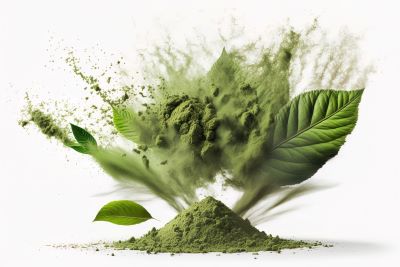
Market demand has significantly influenced the perception of kratom color, especially red strains like Red Maeng Da and Red Bali. As consumers often expect certain color characteristics (e.g., red for relaxation), some vendors may blend or manipulate kratom during the drying process to meet these expectations.
This blending could involve mixing batches of kratom leaves or artificially adjusting the drying environment to standardize the color of the powder. While this might create uniformity, it doesn’t always reflect the natural variety of kratom’s alkaloid content.
Some consumers are misled to believe that deeper red hues indicate a more potent or “better” product, but in reality, color doesn’t always correlate with quality or effects. Natural kratom color variation is a hallmark of its authenticity and the unique environment where it’s grown.
Conclusion: A Kaleidoscope of Colors
Kratom powder color is a captivating aspect of this natural botanical, shaped by the drying season, techniques used, and the plant’s inherent processes. While red kratom might not always be red, this variation testifies to the plant’s diversity and the artistry of its cultivation. Understanding these factors empowers you to make informed choices and savor the rich experiences kratom offers.
Kratom Colors FAQ
Red kratom strains can sometimes appear green due to the specific drying and fermentation processes used during production. For example, some red strains are dried in the sun for a shorter period or undergo less fermentation, preserving the green color of the leaves. Additionally, the age and health of the leaves at harvest can also impact their final color. Despite the appearance, the strain’s properties remain consistent with what is expected from a red kratom.
The color of kratom can be indicative of its alkaloid profile, which may influence its effects. However, the color itself does not directly determine potency. Different drying methods, fermentation, and regional differences in growing conditions can lead to variations in color. While green strains are often associated with balanced effects, red strains with relaxation, and white strains with energy, these are general trends, and individual experiences may vary.
Disclaimer: The information provided in this article is for educational purposes only and does not constitute medical advice. Kratom is not intended to diagnose, treat, cure, or prevent any disease. Always consult with a healthcare professional before using any new supplement or substance. The legal status of Kratom varies, so please check local laws before purchasing or using it.
